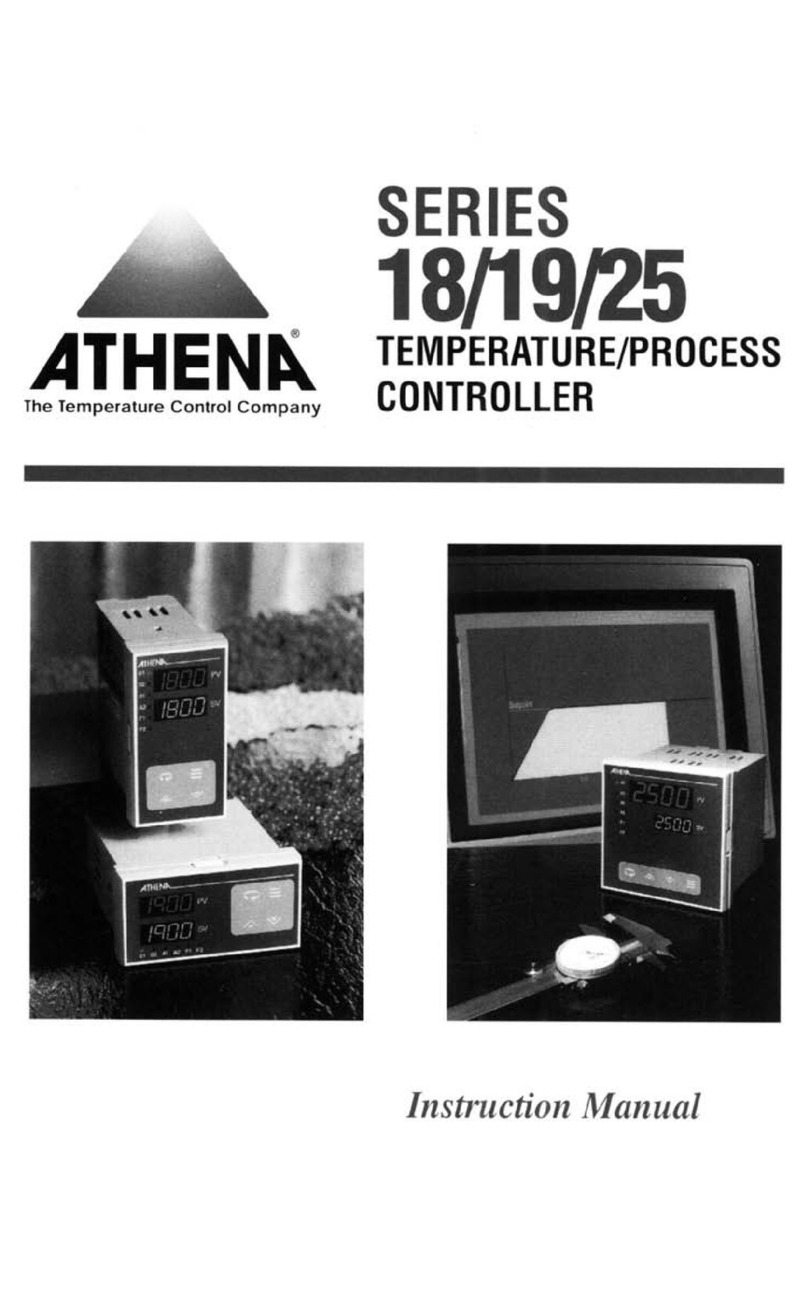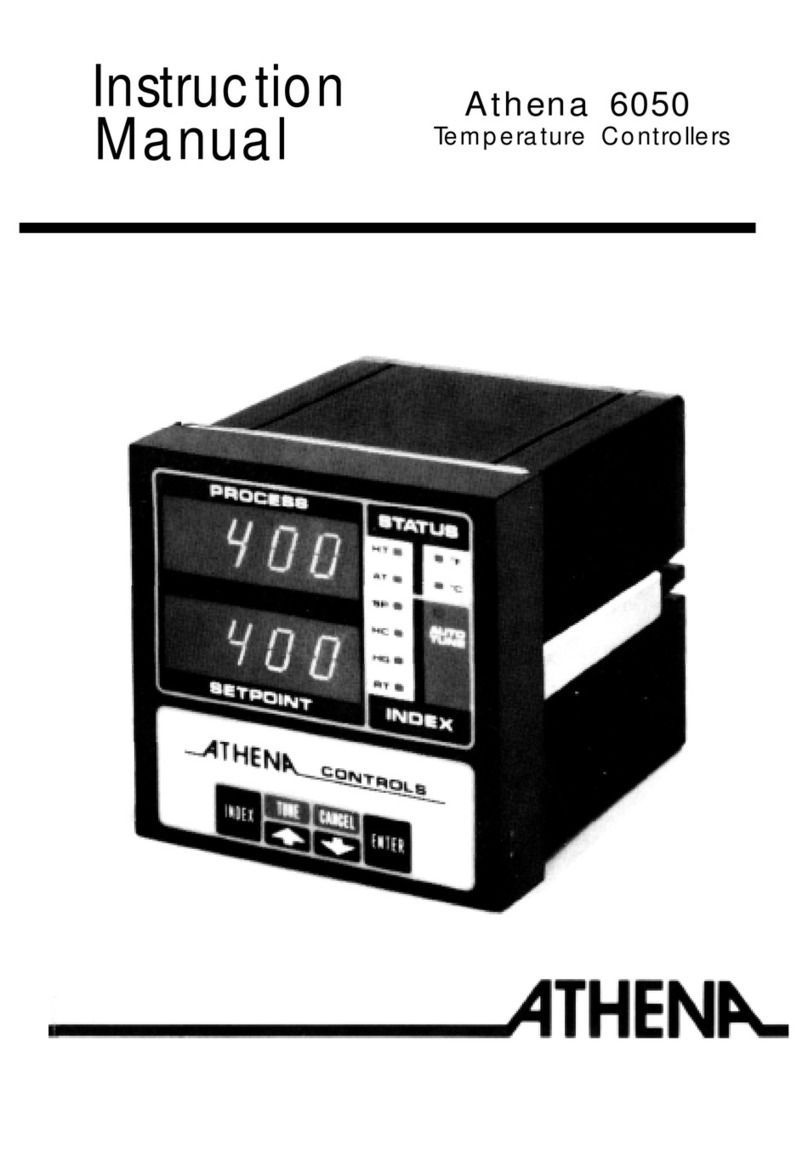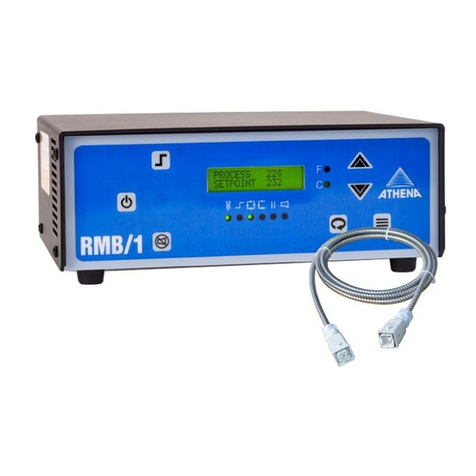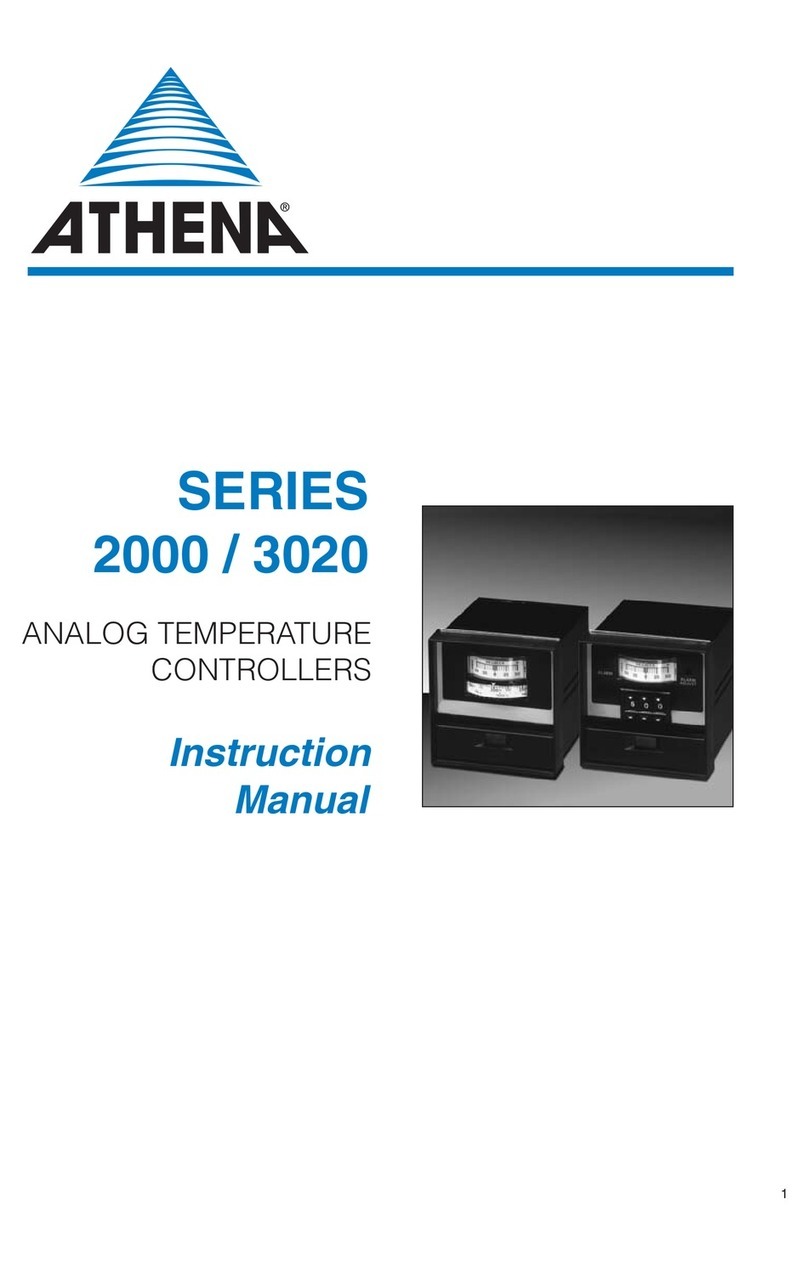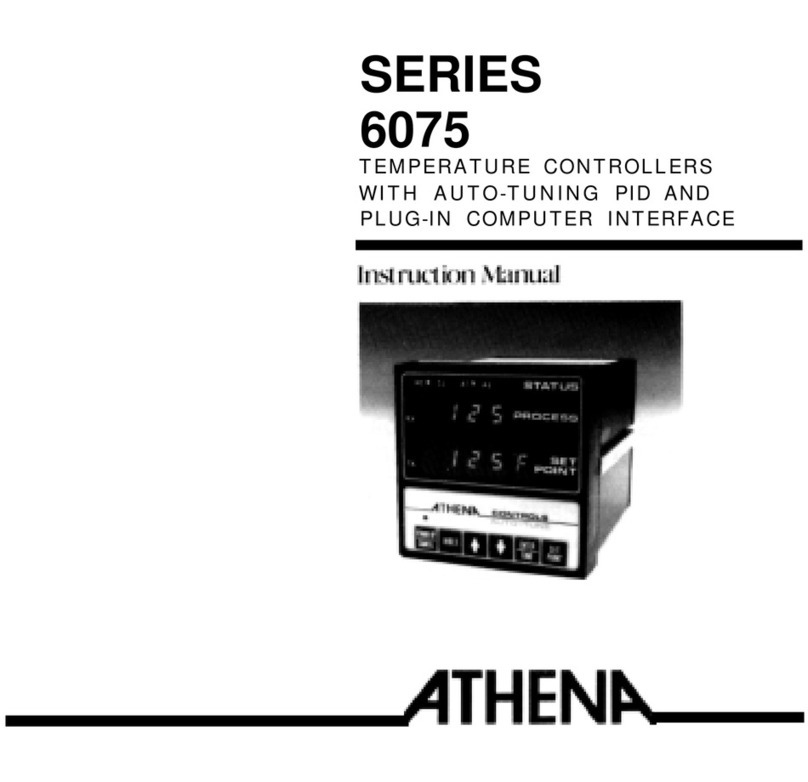Athena
6000/6200
Microprocessor-based Temperature Controller
Designed for the user
Athena’s
unique
new
6000
microprocessor-based controller
was developed to satisfy the needs
of actual end users, designers, and
specifiers. Data was gathered on
the temperature controller features,
functions, and performance capa-
bilities that they desired. Then
Athena designed a controller to
satisfythem.
Dual
lndication
Now you can compare process
temperature and setpoint at a
glance - hands free. This dual
digital
display concept has formerly
only been available in high priced
multifunction process controls.
Microprocessors reduce size,
add extras
By using microprocessor
hardware and a highly sophisticated
software package, Athena designers
and engineers have included more
features than have ever been
available before in a controller this
size. Incorporating two digital
displays,touch-key
operation,
software
linearized
and
stabilized
thermocouple input with 3-mode PID
action heat/cooling control and dual
alarms,
ºF to ºC
conversion,
alarms
that can be energized for temp
rise/fall
and selectable as process
or deviation type, and a program
restart circuit that eliminates
program lock-up due to transient
voltage
spikes
or line voltage
“brownout.” Programautomatically
restarts within 2
milliseconds
after
condition passes.
PID
Control
Threemode(Proportional,
lntegral, and Derivative) action
eliminates offset (droop) as cooling
and heating requirements change in
the process, and provides fast
output response to rate of change
and reduces temperature overshoot
and undershoot.
Thermocouple linearization
The 6000 has a program to
linearize signal input from the
thermocouple. Without it, tempera-
ture controllers have accurate
temperature indication over only
certain
portions of the scale.
Contents
General:
Introduction
Configuration:
Output Forms
Alarm Types
ºC/°F
Installation
lnstructlons:
Unpacking
Locating
Mounting
Terminal Designations
Output Modules
Wiring Examples
Internal
Switches
Thermocouple lnstallation
PAGE
2
4-5
4-5
4-5
5
5
5
6
6-7
6-9
10
11
Operating
Instructions:
Control Panel Description
Start-up
Parameter Entry
Heat Galn Setting
Rate
Setting
Examples
Cool Gain
Setting
Trouble Shootlng
Repairs and Warranty
PAGE
13
13
13-14
15
15
15
15
16
16
2






